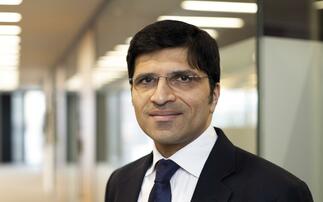Key points
At a glance
- The RSA has called for a 30% flat rate tax relief to boost incentives for basic rate taxpayers
- It estimated that three-quarters of people would be better off under such a regime and it would be "cost-neutral" for HM Treasury
- But industry commentators said change would be complex and necessitate a ‘comprehensive review’ of pensions
The Royal Society of Arts (RSA) has reignited the debate on the introduction of flat-rate pensions tax relief - saying a 30% flat rate would be progressive, cost-neutral and leave three-quarters of earners better off.
In a report - Venturing to Retire, which was published today in partnership with e-commerce marketplace Etsy - the think tank said 40% of government spending on pension relief goes to the top 10% of those claiming relief.
It said this is "deeply disproportionate" - and means that, while pensions tax relief costs HM Treasury £30.5m a year, £11.8bn is spent on people earning more than £70,000.
The RSA called for a 30% flat rate to boost the pension pots and individual saving incentives for basic rate taxpayers - a policy change that has long been championed by former pensions minister Steve Webb.
The report said a flat rate would match reliefs to contributions - meaning that, for every £1 savers wished to add to a pension, they would only need to contribute 70p regardless of how much they earn or which tax bracket they fall into.
So if the top 10% pay in 24%, they get 24% of the money spent on relief, rather than the current 40%.
The RSA's analysis suggested three-quarters of people would be better off under a flat-rate regime and that such a move would be "cost-neutral" for HM Treasury at year zero.
The think tank's report said the current system of tax-relief especially hurts the growing ranks of the self-employed, who earn less than the average employee and have no employer topping up their pension.
Currently, it said just one in five self-employed pay into a pension, while 45% have no pension at all.
It said few of the self-employed can rely on a partner's pension or selling a business or property to fund retirement adding that non-pension products, such as the Lifetime ISA, fail to offer the financial benefits of a traditional pension.
It said it believed the reform of pension relief was the "only viable solution to under-saving among the self-employed".
RSA associate director for economics Benedict Dellot, who authored the report, said: "Overhauling tax relief is the only way to move the needle on saving rates and help the growing ranks of the self-employed avoid destitution in older age."
The RSA report also called for a new ‘Office for Financial Security among the Self-Employed' to safeguard the prosperity of this growing demographic, as well as treating accountancy software providers as a de facto ‘employer', requiring them to enlist their self-employed clients onto a pension scheme.
It also proposed introducing sidecar savings accounts, blending a rainy-day fund with a pension account and giving savers greater access to their money in the event of emergencies. It also called for the implementation of a fully introducing Dutch-style collective defined contribution (CDC) pensions, which would provide a guaranteed income to pensioners from the point they retire until they die.
RSA chief executive Matthew Taylor added: "The treasury should deliver on the prime minister's vow to prioritise ordinary working families, rather than the wealthy, when it comes to tax, and act for the real Middle England - hairdressers and taxi drivers on low and middle incomes, not top earners like me on £70,000 plus who the system currently subsidises.
"Overhauling an outdated and indefensibly regressive system, alongside introducing CDC pensions, would showcase the government's serious commitment to social reform."
Industry response
JLT Employee Benefits head of technical John Wilson said it was not surprising pensions tax relief had come under fire once again - noting the current system was complex, often targeted the wrong people and can promote inequality.
But he warned: "Before the industry and the government go rushing headlong into overhauling policy around pensions tax relief, it is important for all stakeholders to think critically about how changes made now may impact an entire generation of savers, particularly those saving for the first time under auto-enrolment.
"We believe that the current system requires evolution - not revolution - and should be structured around the reform of the EET model which has been in place for over 40 years. In our view, the key objectives of any reform should be to increase pension savings among low to middle income earners, to redistribute pension tax relief without additional cost to HM Treasury and to simplify existing pension tax rules, thereby minimising the need for subsequent tinkering."
Hargreaves Lansdown head of policy Tom McPhail added that while the government had "unfinished business" with pension tax reform, and noted the move to a flat rate "is well-tested and would garner support in many quarters", he warned any change would be hugely complex.
He said: "Pension taxation is notoriously complicated and any move to reform the central pillar of the system would necessitate a more comprehensive review of the multitude of quirks and wrinkles which bedevil pension planning. I'm not sure the government has the appetite for that right now.
The government launched a consultation on pensions tax relief in July 2015 - Strengthening the Incentive to Save - to look at whether there was a case for reform.
During the consultation, various models and approaches to reform were suggested - including models featuring a flat rate of relief and discussion of alternative tax treatments such as the removal of tax in the deculmulation phase.
The government eventually decided not to make any changes - concluding that it was "not the right time to undertake significant reforms".
The RSA proposes replacing basic (20%), higher (40%) and additional (45%) pension relief with a single flat rate of 30% in order to encourage basic rate payers to save.
This would mean a worker on £15,600 who contributes 5% to a personal pension (£780) would see their tax relief climb from £195 a year to £335, a 70% increase.
Likewise, a worker on £30,000 who contributes 5% of their salary to a personal pension (£1,500) would see her tax relief climb from £375 a year to £645.
However, a worker on £60,000 who contributes 5% of their salary to a personal pension (£3000) would see her tax relief fall from £2,010 to £1,290.








